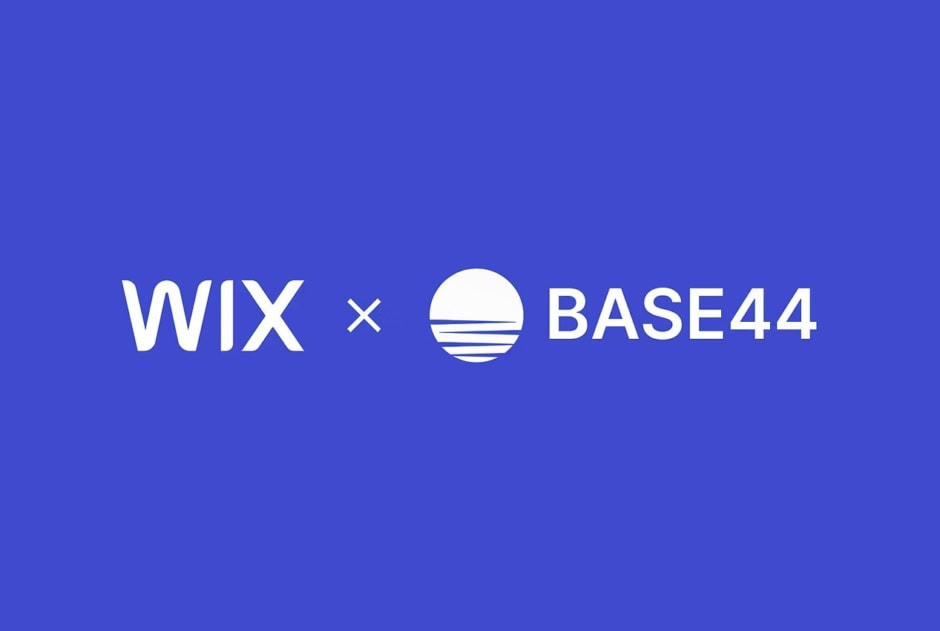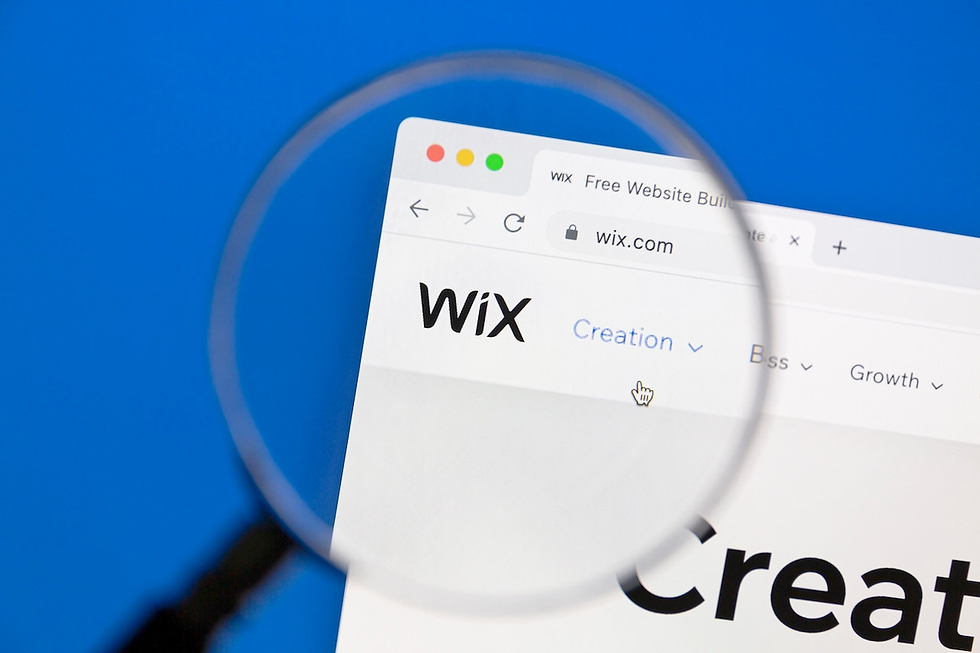Base44’s Rapid Rise: From 6-Month Startup to Wix’s $80M Acquisition
- Olivia Johnson

- Aug 15
- 11 min read

In June 2025, Wix announced its acquisition of Base44, a six-month-old Israeli startup, for approximately $80 million. This swift deal highlights the rising strategic importance of vibe coding—an innovative approach that uses natural-language prompts to create websites and apps without writing code. Base44’s technology promises to simplify digital creation by combining AI-driven automation with an intuitive, code-free user experience.
This acquisition is a significant milestone for the no-code/low-code market and SaaS mergers, signaling increased investor and platform interest in AI-assisted development tools. For web creators, designers, and businesses seeking faster, more accessible digital product building, Wix’s move reinforces the growing trend of democratizing software creation through AI.
This article explores Base44’s rapid growth story, the details and rationale behind Wix’s $80 million acquisition, a deep dive into vibe coding technology, and the broader market impact. Drawing upon official Wix communications, industry reports, and expert analysis, it provides actionable insights for founders, investors, and users navigating the evolving AI-driven web creation landscape.
1) Background: Base44’s founding, rapid growth, and product vision

Base44 emerged as a standout player in Israel’s vibrant startup ecosystem, founded by entrepreneur Maor Shlomo. Remarkably, within just six months of its inception, Base44 attracted significant attention for its novel approach to web and app development through vibe coding, a concept that leverages AI to translate natural language prompts into full-fledged digital experiences without traditional coding.
The startup’s team rapidly expanded from a small group of engineers and AI specialists to a hyper-growth phase marked by increasing user adoption and engagement. Base44 targeted non-developers—small business owners, designers, and agencies—who desired an intuitive way to build complex sites and apps using conversational commands rather than code.
Growth metrics prior to acquisition reflected this momentum: rapid daily active user (DAU) growth accompanied by high retention rates signaled strong product-market fit. This swift traction made Base44 an appealing acquisition target for larger platforms like Wix seeking to enhance their AI-powered no-code portfolios.
Situated within Israel’s dynamic tech landscape—known for rapid acqui-hires in AI and software innovation—Base44 exemplifies how startups with defensible AI technology and clear user benefits can achieve accelerated exits. The company’s trajectory showcases how combining visionary leadership with cutting-edge AI can reshape digital creation.
1.1 Founding story and leadership
Maor Shlomo, a seasoned entrepreneur with a background in AI and software development, founded Base44 with the vision to democratize digital creation. Within the startup’s first six months, Shlomo led a focused go-to-market effort emphasizing rapid prototyping and user feedback loops. The company's early milestones included launching a minimum viable product (MVP) that enabled users to generate websites from simple textual descriptions.
Shlomo’s leadership was instrumental in rallying a skilled team that blended AI expertise with UX design—a combination critical for delivering on the promise of vibe coding. This lean but agile approach allowed Base44 to iterate rapidly and showcase tangible value to early adopters, setting the stage for its high-profile acquisition (Times of Israel).
1.2 Product and “vibe coding” concept
At its core, vibe coding enables users to create digital products through natural language prompts that the AI interprets into functional UI components and workflows. Unlike traditional coding or even many no-code tools that require manual interface building or logic mapping, Base44’s platform automates these tasks by understanding the “vibe” or intent users convey in plain speech or text.
For example, a user might type “build me a modern portfolio site with a dark theme and contact form,” and the system scaffolds the necessary pages, UI elements, and backend flows seamlessly. This approach drastically reduces friction for non-developers by abstracting away technical complexity while still allowing refinement.
The product vision focused on empowering creatives, entrepreneurs, and agencies who lacked deep programming skills but needed powerful customization capabilities—offering a bridge between AI assistance and human design intuition (Wix press release).
1.3 Early traction and hyper-growth indicators
Base44 demonstrated impressive growth indicators within months of launch. According to reports from Calcalistech, the platform saw rapid increases in user sign-ups and engagement metrics such as session length and task completion rates. Early users praised the intuitive experience of generating web apps with simple prompts and iterating designs interactively.
This hyper-growth caught the eye of Wix as it aligned with their strategic goal of expanding AI-driven code-free development capabilities. The speed at which Base44 onboarded users and retained them indicated strong product-market fit—a critical factor behind Wix’s decision to pursue acquisition rather than developing similar technology in-house (Calcalistech).
2) Acquisition details: Terms, valuation, and deal timing

In June 2025, Wix publicly announced its acquisition of Base44 for approximately $80 million—a deal that surprised many given Base44’s infancy as a six-month-old startup. Coverage across media outlets including Times of Israel, InsiderMonkey, and GlobeNewswire confirmed the price and timeline.
The announcement highlighted Wix’s intent to accelerate its AI-enabled no-code tools by integrating Base44’s proprietary vibe coding technology—a move positioned as expanding their market leadership in code-free digital creation platforms.
2.1 Deal value, timing, and reporting
The $80 million valuation was officially communicated in mid-June 2025 alongside Wix’s press release detailing the strategic fit (GlobeNewswire). Multiple outlets corroborated the figure shortly afterward.
The timing underscores Wix’s urgency to bolster its AI capabilities amid intensifying competition in no-code platforms. The swift acquisition post-Base44’s founding is notable even within Israel's fast-paced tech M&A environment (Times of Israel).
2.2 Strategic rationale from Wix and deal objectives
Wix framed the acquisition as a strategic step to “further expand into vibe coding”—leveraging AI to simplify both website and app creation without requiring users to write code. The goal is to accelerate product development cycles by embedding Base44’s AI models into Wix’s existing no-code ecosystem.
This integration aligns well with Wix’s broader objective to democratize software creation through intuitive tools that serve SMBs, freelancers, and agencies alike. By incorporating Base44’s AI-assisted workflow generation and natural-language interface, Wix expects to enhance user experience while maintaining scalability (Nasdaq).
2.3 Market signals and investor/industry reactions
Industry analysts viewed the acquisition as emblematic of ongoing consolidation in the no-code AI market segment. Commentary emphasized how Wix is aggressively positioning itself to lead in AI-driven web creation by absorbing emerging innovators rather than building from scratch (InsiderMonkey).
No regulatory hurdles were publicly reported at the time of announcement; however, standard antitrust reviews are expected given the strategic nature of this deal in the SaaS platform space.
3) Technology deep dive: What “vibe coding” and Base44’s AI actually do

vibe coding is an emergent paradigm where developers—or non-developers—use natural language prompts to instruct an AI system to generate software components dynamically. Base44 operationalized this concept by combining large language models (LLMs), UI scaffolding algorithms, and heuristic flow management into an integrated platform that translates human intent directly into working apps or websites.
This contrasts with traditional low-code platforms where users piece together prebuilt modules manually; Base44 automates much of that assembly by interpreting context from freeform input. The results are faster build times with less technical knowledge required.
3.1 How Base44’s “vibe coding” works in practice
Users begin by entering a conversational prompt describing their desired web or app project—such as "create a boutique online store with minimalist design and customer reviews." The AI parses this input using natural language understanding techniques to identify key features (e.g., product catalog, minimalist UI).
Next, Base44 generates UI scaffolding: page layouts, navigation menus, forms, buttons—all assembled based on best practices encoded within its training data. The system also suggests backend workflows like user authentication or payment processing where relevant.
Users then enter an iterative refinement loop: they modify prompts or tweak generated elements via intuitive controls until satisfied. This prompt → AI interpretation → scaffolding → refinement cycle enables rapid prototyping without code (Wix press release; TopMostAds analysis).
3.2 Technical comparison: Base44 vs. existing no-code/low-code platforms
Compared to legacy no-code tools like Webflow or Bubble—which rely heavily on drag-and-drop interfaces—Base44’s vibe coding emphasizes language-first interaction, allowing users to bypass manual UI assembly altogether. While Wix itself offers some low-code functionality, Base44 adds a distinctive AI-driven layer that interprets nuanced user intent more fluidly.
Other AI-assisted coding platforms attempt similar automation but often target developer audiences requiring some scripting knowledge. Base44 uniquely focused on non-developers craving simplicity paired with powerful customization.
Strengths include:
Speed: instant scaffolding from natural language.
Accessibility: minimal learning curve.
Flexibility: iterative refinement embedded natively.
Potential limitations noted include handling highly complex logic flows or deep integrations beyond scaffolded templates—a challenge common across no-code AI tools (Search Engine Journal; Nasdaq analysis).
3.3 Technical caveats and engineering implications for integration
Post-acquisition reports caution about potential technical debt inherited from rapid startup development cycles—such as undocumented APIs or security gaps in AI models trained on unvetted data sources (Calcalistech technical blog). Integrating Base44 into Wix’s mature infrastructure will require:
Comprehensive code audits.
Model retraining or fine-tuning for security compliance.
API standardization aligning with Wix's design system.
Incremental feature rollouts to prevent UX disruption.
Addressing these challenges carefully will ensure that vibe coding capabilities scale reliably within Wix's ecosystem while minimizing risk exposure.
4) Market impact and industry trends: AI, no-code, and the competitive landscape

Base44’s acquisition marks a pivotal moment in the ongoing evolution of AI-fueled no-code/low-code adoption. It accelerates a trend where sophisticated AI models empower users without technical backgrounds to create complex software rapidly—a democratization of technology once limited to professional developers.
This move reflects broader consolidation trends as established SaaS platforms acquire nimble startups specializing in AI assistance to stay competitive amid rising user expectations for automation and ease-of-use.
4.1 Trend: AI-fueled no-code/low-code adoption
The market is witnessing a surge in platforms integrating large language models and other generative AI technologies directly into development pipelines. This shift enables:
Faster prototyping.
Lower barriers for non-coders.
Greater customization driven by natural language input.
Wix acquiring Base44 exemplifies how feature parity is accelerating across vendors through M&A activity rather than organic build alone.
4.2 Competitive implications for Wix and rivals
By integrating Base44’s vibe coding technology, Wix strengthens its market position against competitors like Squarespace and Webflow that also offer no-code solutions but are still evolving their AI strategies. This acquisition could trigger:
Accelerated feature rollouts across rival platforms.
Increased M&A activity targeting niche AI startups.
Heightened focus on conversational UX for site/app builders.
Competitors may respond by enhancing their own AI toolkits or pursuing acquisitions to avoid falling behind.
4.3 Market sizing and user demand signals
Reported user engagement metrics from Base44 reveal strong appetite for code-free AI tools among SMBs and creative agencies seeking faster time-to-market with less reliance on developers. This suggests continued robust demand growth for similar offerings in both SMB-focused SaaS products and increasingly within enterprise digital innovation initiatives (Calcalistech adoption data).
5) Integration challenges and solutions: Security, engineering, and regulatory considerations

While promising, integrating a hyper-growth startup like Base44 poses several risks for Wix related to security vulnerabilities inherent in AI-driven tooling, engineering complexities aligning disparate tech stacks, and compliance with regulatory frameworks governing digital platforms.
5.1 Security and technical risk assessment
AI-powered systems face unique attack vectors such as adversarial inputs or data poisoning risks. Reports highlight potential vulnerabilities in Base44’s initial codebase that require thorough review (Calcalistech security blog).
Recommended mitigations include:
Codebase audits focusing on secure data handling.
Red-team penetration testing simulating attack scenarios.
Model evaluation for bias or unsafe prompt generation.
These steps ensure robustness before public release within Wix’s environment.
5.2 Engineering integration and product roadmap alignment
Wix aims to integrate Base44 capabilities while maintaining seamless UX continuity by:
Mapping APIs between platforms.
Migrating AI models into Wix’s infrastructure.
Aligning design systems for cohesive UI.
Employing CI/CD best practices for staged rollouts.
This phased approach minimizes disruption while allowing incremental feature validation consistent with Wix’s accelerated product development goals.
5.3 Regulatory and antitrust considerations
Legal diligence around antitrust regulations is standard for platform-level acquisitions impacting market competition. Potential regulatory reviews focus on:
Market concentration effects.
Data privacy compliance (GDPR, CCPA).
Recommended compliance checklists include thorough documentation of data flows, transparency reports for AI decisions, and engagement with regulators early in integration planning.
6) Case study and lessons: How Base44’s six-month runway led to a rapid exit

Base44 exemplifies how focused innovation combined with rapid market validation can result in swift strategic exits even within highly competitive sectors like AI-driven no-code development.
6.1 Why Base44 attracted Wix: value signals that matter to acquirers
Key signals included:
Strong early user growth metrics demonstrating product-market fit.
Immediate synergies with Wix’s existing no-code ecosystem allowing seamless integration.
These factors shortened due diligence cycles and accelerated M&A negotiations.
6.2 Practical founder takeaways and M&A playbook
Startups aiming for similar exits should prioritize:
Demonstrating early traction through measurable KPIs (DAUs, retention).
Maintaining strong operational hygiene including security audits.
Documenting APIs/models clearly for smooth integration.
Crafting narratives highlighting strategic alignment with potential acquirers’ roadmaps.
Benchmarking prompt-to-output quality rigorously to showcase defensibility.
This approach builds confidence among buyers while reducing integration friction (TopMostAds lessons).
7) Applications, user scenarios, and product roadmap implications for Wix customers

Base44’s vibe coding technology opens exciting new possibilities within Wix’s platform—enabling users from SMBs to agencies to create high-quality digital products more intuitively than ever before.
7.1 Typical user scenarios: SMBs, designers, and agencies
Imagine a small business owner launching a landing page by describing their brand aesthetic: “a cozy modern café vibe with rustic accents.” The AI generates an entire site layout including menus, reservation forms, and social links instantly.
Designers can rapidly iterate client sites by issuing prompts like “make header more minimal” or “add testimonial carousel,” reducing manual tweaking dramatically.
Agencies benefit from faster delivery cycles and reduced development costs by leveraging automated scaffolding for routine apps or sites.
7.2 Product roadmap and monetization possibilities for Wix
Potential future features include:
Conversational site builders enabling full projects via chat interfaces.
AI-generated customizable templates tailored dynamically per user input.
Embedded app generation supporting vertical-specific workflows (e-commerce, bookings).
Monetization might follow tiered models—offering basic vibe coding features freemium-style while reserving advanced customization or enterprise integrations for premium subscriptions (Nasdaq analysis).
8) FAQ: Likely reader questions about Base44, the Wix acquisition, and vibe coding
Q: Why did Wix pay $80 million for such a young startup? Wix recognized that Base44 had developed differentiated vibe coding technology enabling AI-driven code-free development that aligned perfectly with its strategic goals. The startup showed rapid user growth indicating strong product-market fit—a valuable asset worth accelerating via acquisition (Times of Israel).
Q: What exactly is vibe coding?vibe coding refers to using natural-language prompts interpreted by AI systems to automatically generate website or app components without manual coding or drag-and-drop assembly—simplifying creation especially for non-developers (Wix press release).
Q: Will Base44 remain independent after the acquisition? Industry norms suggest Base44's team will likely integrate closely with Wix's R&D groups while continuing development under Wix branding rather than remaining fully independent (Calcalistech security considerations).
Q: Are there security risks related to this acquisition? AI-driven tooling can introduce vulnerabilities such as data exposure or adversarial inputs; hence Wix plans thorough audits and secure integration measures before widely deploying these features (Calcalistech technical blog).
Q: What does this mean for existing Wix users? Users can expect more powerful AI-assisted site building capabilities enabling faster prototyping through conversational interfaces—streamlining workflows across SMBs and agencies (Search Engine Journal trend context).
Q: How does this affect the broader no-code market? The deal signals increased consolidation among no-code platforms integrating advanced AI features—raising expectations around ease-of-use while intensifying competitive pressures (Nasdaq trend analysis).
Q: What regulatory hurdles exist? Standard antitrust reviews are anticipated given platform consolidation; compliance with data privacy laws will also be critical during integration (InsiderMonkey regulatory mention).
Q: How did Base44 grow so fast? A focused product vision targeting underserved non-developer personas combined with agile iteration allowed Base44 to rapidly build traction through intuitive natural-language prompting—a compelling value proposition driving viral adoption (Times of Israel quick exit context).
9) Conclusion and forward-looking analysis: What Base44’s exit means for Wix and the no-code future

Wix’s $80 million acquisition of Base44 underscores the accelerating shift toward AI-driven web creation powered by vibe coding. By absorbing innovative startups like Base44 early, Wix positions itself at the forefront of democratizing software development—enabling users without technical backgrounds to build sophisticated digital experiences effortlessly.
Looking ahead:
Best case: Rapid integration delivers seamless conversational site builders across Wix tiers fueling user growth globally.
Likely case: Incremental feature rollouts enhance existing tools while competitors respond with their own acquisitions or innovations.
Watchlist: Regulatory scrutiny intensifies around platform consolidation; securing user trust through responsible AI becomes paramount.
For startups aiming at similar exits, prioritizing rapid validation combined with defensible technology remains key. Investors should monitor evolving M&A trends as SaaS platforms race toward comprehensive code-free ecosystems powered by generative AI innovations.
Ultimately, this acquisition marks a defining moment in shaping the future of no-code digital creation powered by artificial intelligence—and Wix is betting big on leading that transformation.


